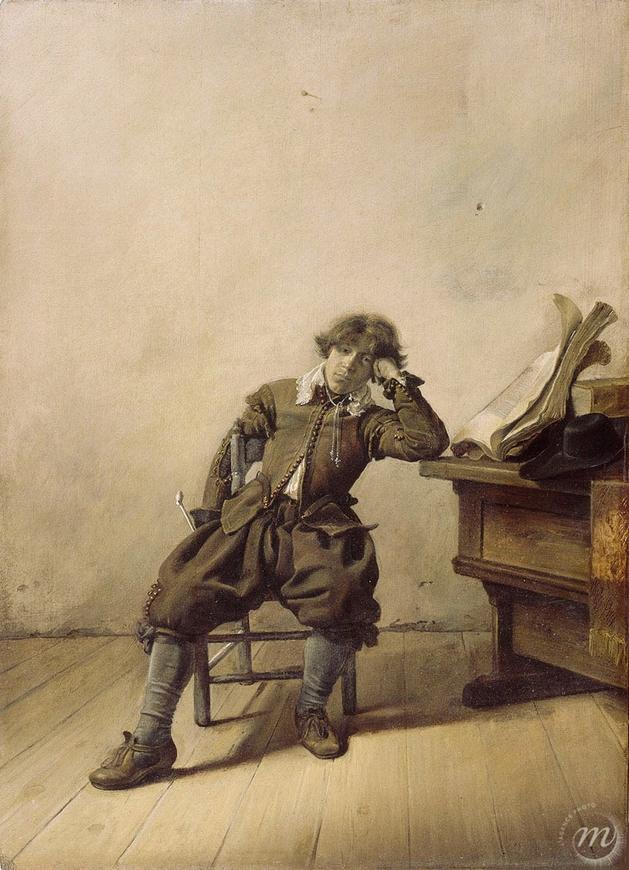His gaze turned away, facing us, a student descends into idleness. He turns away from his subject of study: a folio open on the desk to the right of the painting. This type of bulky book was very common in the 17th century. The boy rests his elbow on the furniture where the folio is placed. A simple detail ? No !
This element is symbolic. It recalls the philosophical reverie in which the student is lost, his face resting on his bent arm. This pose, known to all high school students as summer approaches, is typical of the melancholic state. Melancholy (called "black bile" at the time) serves here as the thinker's means of escape ... is he meditating on the weight of his study ?
This is what the numerous clues left by the painter in the painting suggest. The book seems to have been read more than once, as shown by its dog-eared page. This draws our gaze to a small hole in the wall, then to a nail in line with the student's left foot. Leaning toward the book, he invites the eye to repeat its journey...
The balance of the scene is perfect, and we find ourselves meditating, too... We almost forget the unlit pipe, which is perhaps there to subtly indicate that time flies and our existence is indeed fragile...
Inv. P 240

His gaze turned away, facing us, a student descends into idleness. He turns away from his subject of study: a folio open on the desk to the right of the painting. This type of bulky book was very common in the 17th century. The boy rests his elbow on the furniture where the folio is placed. A simple detail ? No !
This element is symbolic. It recalls the philosophical reverie in which the student is lost, his face resting on his bent arm. This pose, known to all high school students as summer approaches, is typical of the melancholic state. Melancholy (called "black bile" at the time) serves here as the thinker's means of escape ... is he meditating on the weight of his study ?
This is what the numerous clues left by the painter in the painting suggest. The book seems to have been read more than once, as shown by its dog-eared page. This draws our gaze to a small hole in the wall, then to a nail in line with the student's left foot. Leaning toward the book, he invites the eye to repeat its journey...
The balance of the scene is perfect, and we find ourselves meditating, too... We almost forget the unlit pipe, which is perhaps there to subtly indicate that time flies and our existence is indeed fragile...
Inv. P 240